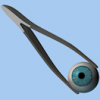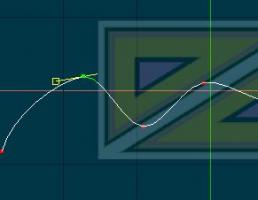-
Posts
1,792 -
Joined
-
Last visited
-
Days Won
16
Content Type
Profiles
Forums
Events
Everything posted by pixelplucker
-
Reminds me when FedEx bought up Kinkos and many printers and ad agencies stopped using them. Shipping companies should ship products. When they stray off their target base then are they in some sort of trouble financially? In any case it looks like they are using a fusion deposit machine similar to the Makerbots but they say they have a water soluble support material? Wonder if the material will work with a maker bot? Makerbots are capable of a thinner layer .0039" vs .010" so the prints would be smoother. My luck with service bureaus has not been good. Most of the shops will print at a low resolution to save time, gang jobs up on build platforms rather than print in the correct orientation (quantity over quality). I used to be a big advocate of send it out rather than buy your own but as prices drop on these machines it is worth it to take a look at buying one. Alternatively you can also get a Roland CNC machine in similar price ranges as many of the mid ranged printers and they offer much higher precision and part quality. For myself I modified a CO2 laser and have been carving with that for many of my low profile stuff. Resolution is about double of any polyjet 3d printer and layer thickness is .00075"
-

Need help big time! Any ideas at all please!
pixelplucker replied to rusty's topic in Animation:Master
Windows 8 my pc? -

Can't see bias handles through roto when set to top 17g
pixelplucker replied to pixelplucker's topic in Animation:Master
-
Beta testing closed already? I signed up today before this post. Email me if you need me, I don't mind crashing AM, got pretty good at it
-
I've been using 3d coat for sculping, had some stability issues with Sculptris and that kept me from diving into Zbrush. Looks like the retopo tools in Zbrush are similar to 3d coat. I do have the latest version of Blender and have been quite adept at deleting the default cube, starting a project then quitting out without saving because the interface annoys me to the point of wanting bounce my computer off the wall. You can decimate most high density models in simple programs like Ultimate Unwrap 3d so it might be easier to sculpt the model, export out an stl then decimate it and use it as a ref object in AM. If by a long shot the retopo comes in clean and all quads it is possible to convert that to AM splines right off. Though I never had super success with that and by the time your done untangling the spaghetti of splines you might as well just retopo it in AM. Nice work
-
Only real issue I ever had with any of the obj exports was with the normals, make sure normals are correct within AM prior to exporting. This is the same with any program. Will save you some painful flipping later on since it is far easier to do this within AM. There is also a Refine Normals (right click in model window) which works well. Importing obj's has always been iffy imo. I never had success with Troer, I think you would be better off using the retopo function and make a clean AM model if you really need to animate it.
-
I remember seeing a sample done with AM showing objects orbiting around from one to another when I first looked at AM. Might have used newton. It used to be on the old site under sample works.
-
That's pretty cool, thanks!
-
Found this, my Manga Studio uses it but can't seem to find a whole lot on it. Might be pretty cool for AM http://www.clip-studio.com/quma/en/products
-
If you have a pdf send to me, I should be able to convert it in Serif's Pageplus and export an html out. I also have the option of exporting an e-book as well.
-
True, thanks
-
Stl's probably won't import all that well since they are triangles. Unfortunately I can't keep just quads from either Moi or 3d Coat and n-gons get funky on import. Still think it is easier to take a depth scan and make multiple images, I'll see about getting AE for that.
-
How do you do a boolean with an AM model on a prop? Program crashed soon as I tried.
-
I don't have AF, is there another program that can do that? Used to use Debabalizer until they stopped making it.
-
Only problem with using booleans is many of my models are created in a cad program or as voxel exports to stl and aren't native AM files. Number of slices may vary depending on my stock thickness and the detail of the objects I want to carve. 255 would be the maximum I think I could get out of an image. Basically I am trying to avoid opening 255 copies of a depth image and using threshold on each of them then saving them out.. Seems pretty painfully slow. I don't need tool paths since laser's can work with bitmap images. There are some topics on LDI (layered depth images) which seem to be used to reconstruct 3d models from 2d images and for masking images but I can't seem to find anything on splitting the layers out to individual files.
-
I can render a depth image from AM, what I want to do is take that image and make multiple images out of it. Each image is one level of the depth. I would then load those into my engraver and cut each layer. Each layer becomes a pass on the machine. Higher end lasers have the ability to read a 3d model in and carve by varying the voltage. I have a small desktop unit and made a special material for it that enables me to engrave or burn off .001" at a time. It seems to be more precise than the big lasers with varying voltage because I can control the depth by layers of material. That make sense?
-
I want to take a depth map and split it into multiple images to make slices for laser cutting. Is there any easy or automatic way of doing this or do I need to fiddle in my photo editor and use threshold? thanks
-

Early Sunday Morning Building
pixelplucker replied to R Reynolds's topic in Work In Progress / Sweatbox
Nice work, you did a boolean for the bricks? Wouldn't a displacement map work better? Bricks are usually not so perfectly placed, I would think a displacement map would give you greater flexibility to make them varied some. -
-
I would recommend not fiddling with cp's after decaling and creating new maps since you may distort the texture. If your decaling doesn't have extremely distorted patches, peaking a cp shouldn't have a huge effect. Obviously it depends on the texture whether or not it is noticeable. In some ways using actions to flatten out faces have an advantage over LSCM where you can set a key frame and go back to it to tweak it. LSCM has to be done from scratch, pins re-assigned, seems re-picked then run the process again. I had a couple of wishes, one being a patch selection brush or way of painting selections by dragging rather than clicking. Other wish was to show selected patches by highlighting them or changing their color. I think simple features like that would be more useful when decaling. I can't tell you how many times I had to go back and redo a section because I missed a patch.
-
This is why it would be best if the paint programs had an 1/0 to read the mdl files directly. Hop scotching from one format to another then back is never a good idea. Using am obj as a reference shape to paint on is a descent approach.
-
When an obj is exported (reference mesh) it picks up the cp uv mapping if it exists and subdivides the patch into polygons. The subdivided patch includes the polygons inside in the uv groups. This makes the uv mapping unidirectional where by you need to create the uv's within AM because there is probably no real way to merge the uv data back to a cp since you can't decimate the model back into splines and patches and I am guessing it is most likely due to the 5 point patches and 3 point patches that are non quad. So the bias interpretation works by area of influence base uv to cp locations in 3d space? I still haven't been able to get the importer to work. Still not sure why 3rd party companies can't download an SDK and just make a direct importer/exporter for uv mapping of AM geometry. Wouldn't that be better than trying to convert this stuff?
-
I could never get Troer to work. Anyways to use 3d coat for painting the workflow should be like this... Make the model in AM Either bake a set of uv's or unwrap the model within AM with decals (I use a grid pattern as a base texture) You need to generate UV's in AM for the AM model for the cp's to be able to read them correctly. Export a dummy model as an obj along with maps. Bring the obj into 3d coat and paint it then save out the textures. The new textures are what you will be using in AM on the AM model. The obj isn't needed anymore. I tried to get Andrew at Pilgway to make a reader for AM but they said it would be too difficult. They would do it for a fee though, funny how green stamps can lubricate the production cycle isn't it?
-
LSCM isn't necessarily easier than what can be done in AM since you need to figure out where your pins (locked uv points that everthing is oriented from) and the creation of the seam (like a zipper to unrwap the model). It would be far faster than squishing and squashing patches in an action to decal them. It is a big time saver since distortion of the texture is minimal. The Baking feature in AM seems much much better than in the past and for the most part I think it covers the majority of texture needs. It appears to export nicely for painting in outside apps ie: Photoshop, 3d Coat etc. as long as it is used in conjunction with a reference obj model for direct painting. Downside for Baked surfaces is the uv area isn't in the power of 2 (256x256, 1024x1024...) which is a draw back for those using the models for game creation in particular. Ideally having LSCM in Painter 3d would be the best approach. Is there any more development with Painter 3d? I really liked that program, worked so well with AM.











